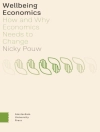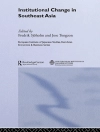Today, students are more familiar with other cultures than ever before because of the media, Internet, local diversity, and their own travels abroad. As such, traditional intercultural communication textbooks which focus solely on the ′differences′ approach aren′t truly effective for today′s students, nor for this field′s growth. Using a social constructionist framework—which explores how culture is constructed and produced in the moments in which it is experienced— Inter/Cultural Communication provides today′s students with a rich understanding of how culture and communication affect and effect each other.
Inter/Cultural Communication improves upon current textbooks in four significant ways: (1) It provides a differences approach and a social constructionist approach; (2) It explores the consequences of cultural moments on immediate communication and on larger scale social issues; (3) It is descriptive, not prescriptive, of how culture is communicated; and (4) It introduces intercultural topics, rather than interpersonal topics.
Weaving multiple approaches together in order to provide students with a comprehensive understanding of and appreciation for the diversity of cultural and intercultural communication, this text allows them to become more aware of their own identities and how powerful those identities can be in facilitating change—both in their own lives and in the lives of others. In addition, the book will help students deal with unfamiliar cultures and understand those with whom they come in contact when they travel, in their communities, in the workplace, in their home, and online.
สารบัญ
PART I. INTRODUCTION TO INTER/CULTURAL COMMUNICATION
Chapter 1. Culture and Communication – Anastacia Kurylo
Living Culture: The Social Construction of Race – Anita Foeman
Chapter 2. Intercultural and Cross-Cultural Communication – Bernadette M. Watson
Living Culture: Interpreting Gestures – Bill Edwards
Chapter 3. Intercultural Communication Competence – Lily Arasaratnam
Living Culture: A Punk. A Lifer. – Brian Cogan
Chapter 4. A Communication Theory of Culture – Donal Carbaugh
Living Culture: Latin Dancing? – Anonymous
Chapter 5. Culture in Conversation – Jessica S. Robles
Living Culture: Let’s Have the Men Clean Up – Anonymous
PART II. DISTINGUISHING SELF AND OTHER
Chapter 6. Self-Identity and Culture – Ronald L. Jackson II, Cerise L. Glenn, & Kesha Morant Williams
Living Culture: The Dilemma of Nationalism in Pakistan – Satarupa Dasgupta
Chapter 7. Ingroups and Outgroups – Howard Giles & Jane Giles
Living Culture: Crip Mate – David Linton
Chapter 8. Privilege and Culture – Gust A. Yep
Living Culture: New Jersey – Anonymous
Chapter 9. Co-Cultural Group Membership – Tina M. Harris
Living Culture: Living with Homelessness – Charles Vasquez
PART III. NAVIGATING INTER/CULTURAL COMMUNICATION IN A COMPLEX WORLD
Chapter 10. Advocacy – Rachel Anderson Droogsma
Living Culture: Creating an Organ Donation Health Campaign – Susan E. Morgan
Chapter 11. Media and Culture: The ‘Reality’ of Media Effects – Mark P. Orbe
Living Culture: Shushing, Shelving, and Stamping – Marie L. Radford
Chapter 12. Technology and Culture – Tatyana Dumova
Living Culture: Staying Connected – Satomi Sugiyama
PART IV. LOOKING TO THE FUTURE OF INTER/CULTURAL COMMUNICATION: RESEARCH AND PRACTICE
Chapter 13. Social Scientific Approach to Culture – Jan Pieter van Oudenhoven
Living Culture: A Day – Kurt Lemko
Living Culture: A Love – Jack Bennett
Chapter 14. Interpretivist Approach to Culture – David Boromisza-Habashi
Living Culture: Community Living – Brad Crownover
Chapter 15. Challenges and Opportunities in Intercultural Communication – Anastacia Kurylo
Living Culture: Toward Internarrativity: Reflections of a Humble Interculturalist – William J. Starosta
PART V. APPENDICES: STUDIES OF INTER/CULTURAL COMMUNICATION
Appendix A: Navajo Culture Explored through Ethnography – Charles A. Braithwaite
Appendix B: Local Culture Explored through Discourse Analysis – Kathleen C. Haspel
Appendix C: Dagaaba Culture of Ghana Explored through Rhetorical Analysis – Anthony Y. Naaeke
Appendix D: Transnational Dominican Culture through Phenomenological Analysis – Wilfredo Alvarez, Mark P. Orbe, Ewa L. Urban, & Nayibe A. Tavares
Appendix E: South African Culture Explored through Content Analysis – Adrian Furnham
Appendix F: Korean Culture Explored through Survey Research – Seung Hee Yoo & David Matsumoto
Appendix G: Japanese Culture Explored through Experimental Design – Yohtaro Takano
เกี่ยวกับผู้แต่ง
Anastacia Kurylo (Ph.D., Rutgers
University) is Assistant Professor of
Communication Arts at Marymount Manhattan College
in New York City.
She teaches courses in Interpersonal Communication, Advanced Interpersonal
Communication Theory, Gender and Communication, Organizational Communication,
Principles and Theories of Communication, Public Speaking, Intercultural
Communication, Stereotypes and Communication.
In her twelve years of teaching she has taught at numerous colleges
including Borough of Manhattan Community College, Marymount
Manhattan College, New York
University, Pace University,
Rutgers University,
and St. John’s University. Her research interests
include the examination of stereotypes communicated in interpersonal,
intercultural, and organizational contexts and the implications of these for
stereotype maintenance. She also studies pedagogy and mentorship as well as emotion
and culture. She has published five teaching activities, four book chapters, a
recent interdisciplinary article on
stereotypes published in Qualitative
Research in Psychology, and her blog The Communicated Stereotype.com. She is
currently writing The Communicated
Stereotype: From Media to Everyday Talk to be published with Lexington
Press. She is a former President of the New Jersey Communication Association
and serves as a reviewer or Editorial board member for several journals and
associations. She enjoys spending time with her family, creating mosaics, eating
in cafes, and working on research with her students.












